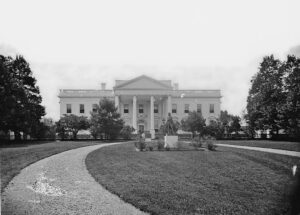Elizabeth Keckly and William Slade

Here’s more of the story. Hello, I’m Susannah Koerber, Chief Curator and Research Officer of the Indiana State Museum and Historic Sites. And I’ll be talking about Lincoln’s inner circle and their sense of history. The people in Lincoln’s inner circle recognized that they were part of the most momentous period in United States history since the Revolution, as witnesses to the Civil War and the end of slavery. In response, they saved objects that testified to the moment and confirmed that they were there as these events took place. Young Tad Lincoln, with some prompting, asked his father for the inkwell used to sign the Emancipation Proclamation and then gave it to his Scottish tutor Alexander Williamson. Elizabeth Keckly, dressmaker and confidante to Mary Todd Lincoln, collected numerous mementoes reflecting her close friendship with the Lincolns. She saved parts of the material she used to make the First Lady’s gowns, including a strip of black lace she gave to her goddaughter, Alberta Elizabeth Lewis-Savoy. Other pieces she made into an elaborate quilt. She asked President Lincoln for the white glove he wore to shake hands at the reception following his second inauguration, an event also attended by Frederick Douglass. Lincoln’s death made such objects even more precious. Keckly preserved the spoon Lincoln used at lunch the day he was killed; it is now in the collection of the Abraham Lincoln Presidential Library and Museum. William Slade, White House messenger and valet, clipped a piece of Lincoln’s hair as he prepared the president’s body for burial. Later generations valued these items for their connection to the Lincolns and the fight for emancipation, but also for the ways they testified to the importance of the people who saved them. The lace preserved by Elizabeth Keckly and the hair treasured by William Slade were later given to John E. Washington, a DC native who wrote a book “They Knew Lincoln” chronicling the Black community members within Lincoln’s circle. Dr. Washington donated part of each to the Lincoln Museum in Fort Wayne in gratitude for the directors’ support of his research. They, and the Emancipation Proclamation inkwell, are now part of the Lincoln Financial Foundation Collection at the Indiana State Museum.









